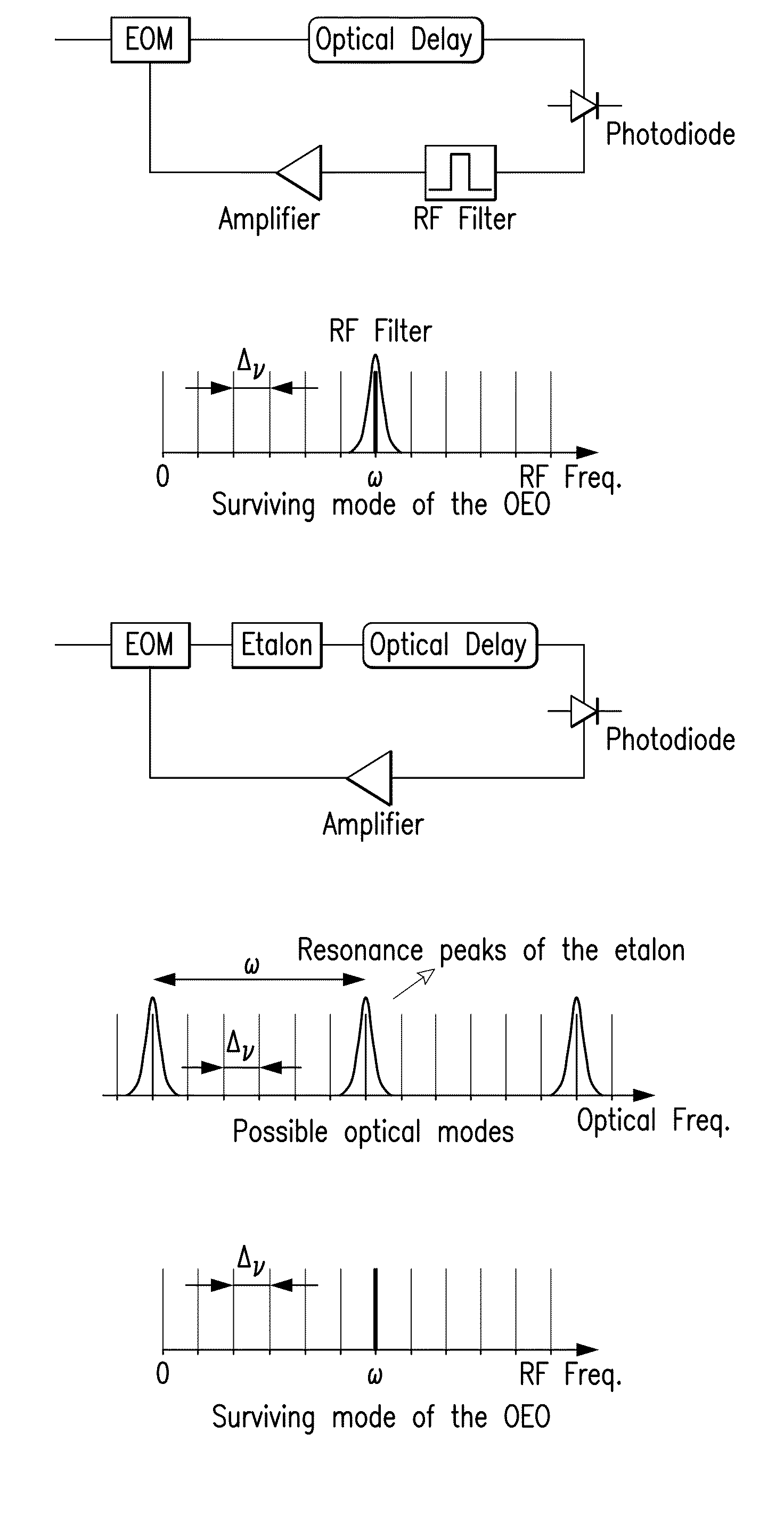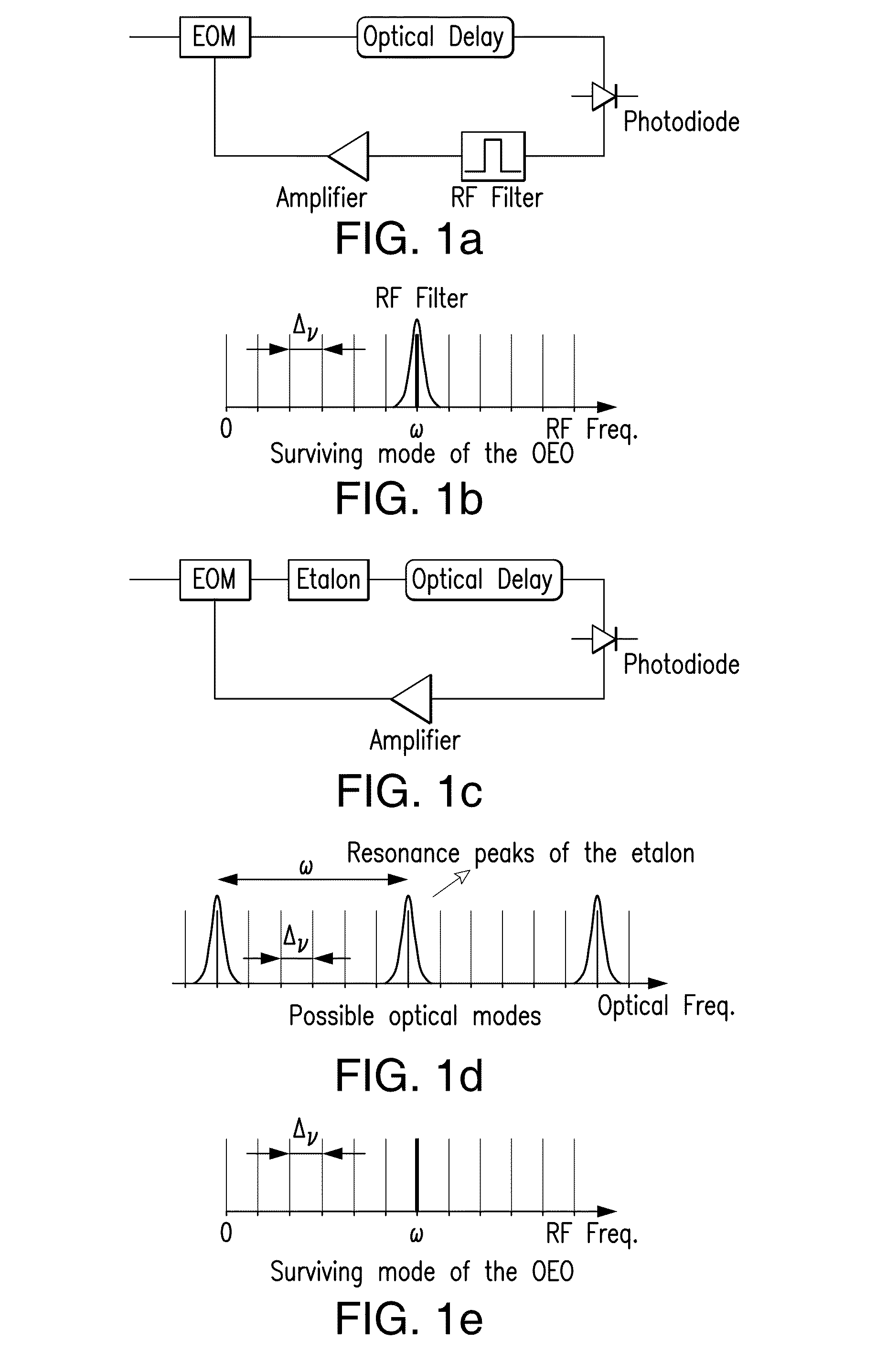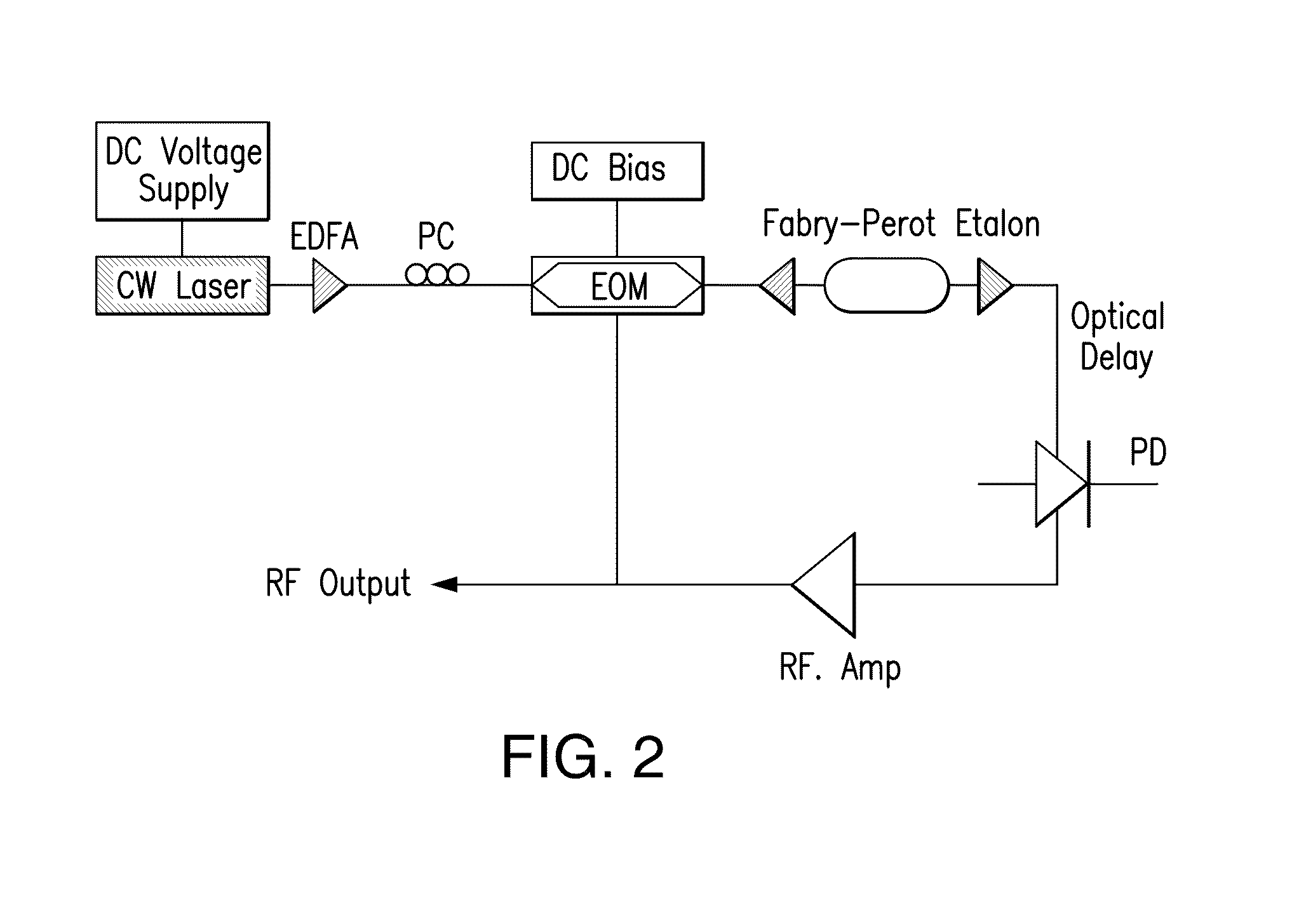Optoelectronic oscillator using a high finesse etalon
a technology of optoelectronic oscillators and etalons, applied in non-linear optics, instruments, optics, etc., can solve the problems of increasing phase noise, affecting the stability of rf filters, and costing to make ultra-narrow bandwidth rf filters, so as to achieve less phase noise, lower phase noise, and higher rf frequency stability
- Summary
- Abstract
- Description
- Claims
- Application Information
AI Technical Summary
Benefits of technology
Problems solved by technology
Method used
Image
Examples
example
[0018]The schematic of the OEO with the Fabry-Perot etalon is shown in FIG. 2. A 1550 nm CW laser is used as the light source. The optical frequency of the CW laser is tunable by applying an external voltage. The output of the CW laser is amplified and sent to the electro-optic modulator (EOM) which is biased at quadrature. A 1000 finesse Fabry-Perot etalon with 10.287 GHz free spectral range (FSR) is used as the mode selector, as described. The etalon's stability is advantageous as it becomes the primary frequency reference in the OEO. The etalon is made of ultralow expansion quartz and is sealed, so it is less susceptible to environmental changes, such as temperature or air pressure. The full width half maximum (FWHM) of the resonance of the etalon is 10 MHz. The fiber to fiber insertion loss of the etalon is only 1 dB. A total optical delay of ten (10) meters is employed in order to get sufficient electrical supermode suppression. The photodiode has 16 GHz bandwidth with 0.8 A / W ...
PUM
| Property | Measurement | Unit |
|---|---|---|
| insertion loss | aaaaa | aaaaa |
| insertion loss | aaaaa | aaaaa |
| insertion loss | aaaaa | aaaaa |
Abstract
Description
Claims
Application Information
 Login to View More
Login to View More - R&D
- Intellectual Property
- Life Sciences
- Materials
- Tech Scout
- Unparalleled Data Quality
- Higher Quality Content
- 60% Fewer Hallucinations
Browse by: Latest US Patents, China's latest patents, Technical Efficacy Thesaurus, Application Domain, Technology Topic, Popular Technical Reports.
© 2025 PatSnap. All rights reserved.Legal|Privacy policy|Modern Slavery Act Transparency Statement|Sitemap|About US| Contact US: help@patsnap.com



